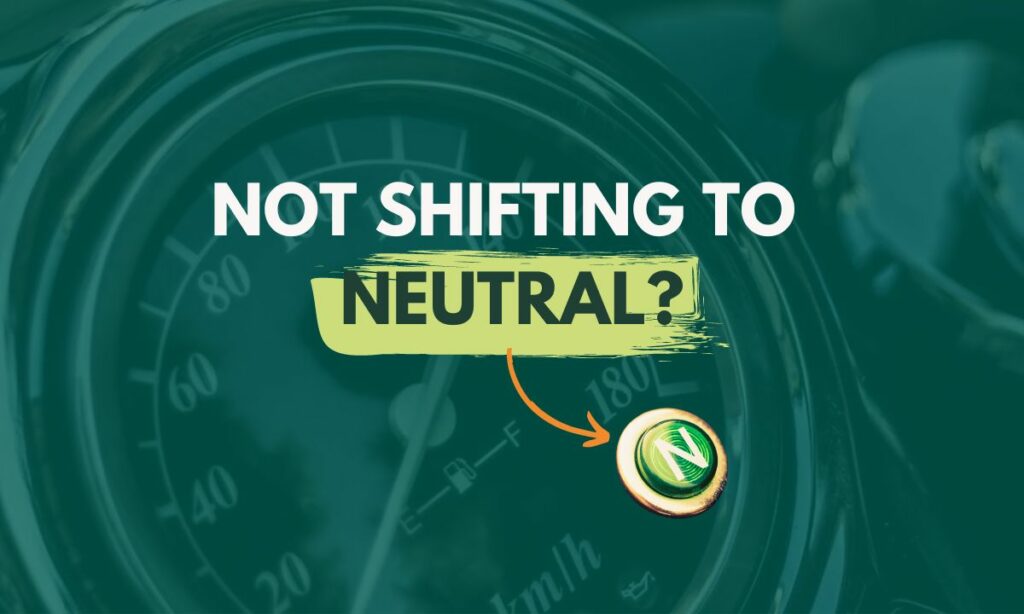Your motorcycle just doesn’t want to shift to neutral sometimes.
You have to rock your motorcycle back and forth and shift the gear up and down for a while for it to go into neutral.
So, what causes a motorcycle to not shift into neutral?
The main reason why a motorcycle won’t shift to neutral is because the clutch cable does not have enough slack.
A loosened or strongly tightened clutch cable will create problems while changing the gears.
Other causes for neutral shifting include low oil levels, poor quality oil, and warped or burnt clutch plates.
If your motorcycle does not shift into neutral when it is standing still, i.e., in resting position, but works perfectly fine while running, then it is not a big concern usually.
By slightly rolling your motorcycle ahead and then shifting the gear – you will automatically take care of the problem and shift into the neutral position.
In this post, we will discuss mainly on neutral shifting problems.
We have a detailed post on general gear-shifting problems here.
Now, let’s dig in.
Reason #1: Clutch issues
The most likely reason why your motorcycle is not changing to neutral gear is, of course, your clutch.
The clutch plates are dragging, and they are not fully releasing whenever you pull in the clutch lever.
Then the clutch lever does not have enough slack.
So, make sure that your clutch lever has some free play.

The clutch wire should have sufficient slack.
Why is that?
If the slack is too high than required, the clutch can slip even though you have fully released the lever.
And the other case, when the slack is too low or tightened, pulling the clutch wire even completely is not enough to fully release the clutch plates.
So you need to ensure the clutch free play is optimum.
Solution:
The only way to fix the issue is to adjust the clutch slack.
Make sure the clutch cable has enough slack.
Neither too tight nor too loose.

Usually, the slack in the clutch wire should be about 2mm to 3mm.
However, check your bike maker’s manual for the exact specifications.
To get the required slack, adjust your clutch by giving it a proper slack.
Here are the ways in order of preference:
- Use the slack measurements as given in the owner’s manual.
- Try adjusting the slack by trial and error. Start with a slack that feels intuitively right. Then, recheck if you can shift to neutral gear. If it is not right, adjust the cable a bit more with an increment of 1mm.
- Adjust the slack based on the blanket thumb rule of 2mm to 3mm.
Reason #2: Not enough Oil
Another possible reason why you are not able to shift the gear into neutral is because your motorcycle does not have enough oil in the system.
Either the oil level in your bike is low or you are using low-quality oil.
For the clutches to operate smoothly, lubrication is very important.
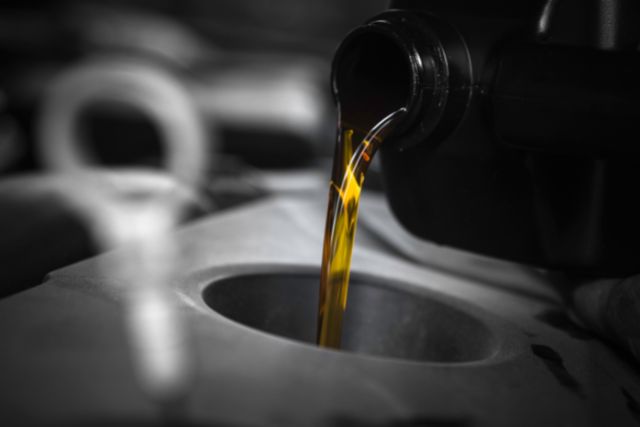
If there isn’t enough oil or if the oil quality is not great, dryness creeps in, which makes it difficult to shift the gears.
So what do you need to do?
Solution:
Check the oil level first.
Take out the oil gauge. And observe the wet mark.

If the wet mark lies between the ‘full’ and ‘low’ marks in the gauge, then the oil level is good.
If it is falling below the ‘low’ mark, then you need to top up or replace the oil.
Avoid topping up. Go for the oil change.
Next, check the oil color and quality.
The oil color should be brown or lighter in color.
If it is black, then the oil is in bad condition.
Next, check the oil for stickiness and transparency.
The oil should not be sticky in condition when you touch them with your fingers.
Also, look for oil transparency. More the transparent, the better the oil quality.
Here is a neat tip:
Place a drop of oil on one of your fingernails. Preferably the thumb.
Now, if you can see your nail through the oil – the oil is in good condition.
If not, the oil has gone bad. And you must change it.
Based on these checks, you should know by now whether to change the oil or not.
As preventive maintenance, replace the oil regularly.
Here is the frequency for the oil change:
| Type of Oil | Frequency of Oil Change |
|---|---|
| Mineral Oil | 2000 miles |
| Semi-Synthetic Oil | 5000 miles |
| Synthetic Oil | 8000 miles |
Also, while changing oils, make sure the oil viscosity is at the right levels.
You do not want cheap quality oil in your motorcycle.
Reason #3: Warped clutch plates
This might not be a common reason.
However, warped or burnt clutch plates will also result in difficulties in shifting your gear to neutral.
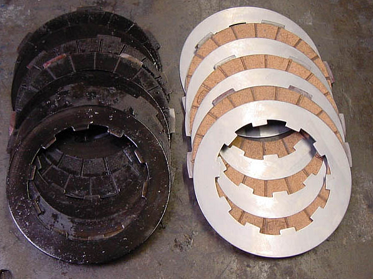
If you have recently traveled for a long distance on your motorcycle, then there is a chance that the clutch was overheated due to riding the bike under full power for long periods.
Solution:
Before jumping to conclusions, let’s first make sure the clutch plates are indeed damaged or warped.
How to do that?
Look for the symptoms.
Symptoms of warped clutch plates include:
- Drop in pickup
- Gear shifting is not smooth
- High rev but no speed
- Clutch lever does not move freely
If you are seeing these symptoms, then yes, clutch plates are burnt or warped.
And they are causing difficulties in shifting to the neutral gear.
The only solution here is to replace the clutch plates.
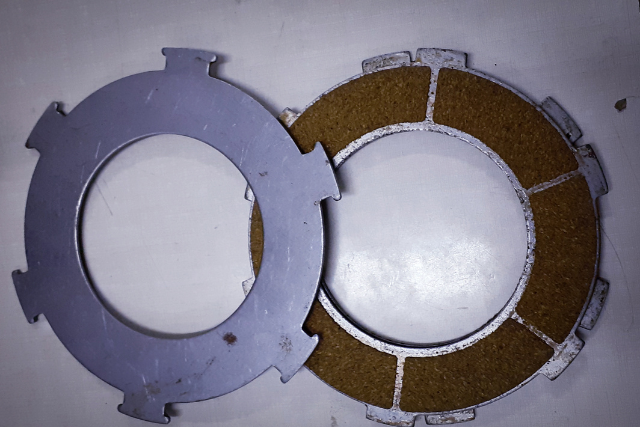
Visit your mechanic to replace the clutch plates with new ones.
Not a big concern if the problem is only when at stop
If you are facing difficulty in shifting into neutral only when the bike is at rest, i.e., when it is at the stop, then it should not be a major concern.
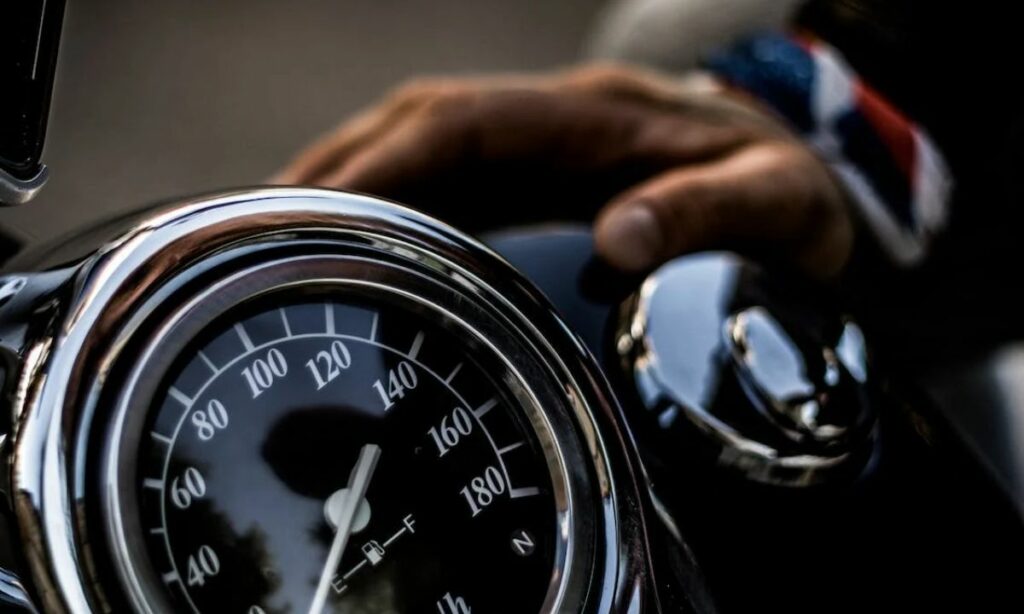
Most motorcycle owners have faced this issue at one time or another.
And as time goes by, bike riders get accustomed to it so much that they forget that this issue exists.
All you need to do is find and shift to neutral gear.
Roll your motorcycle forward slightly and then try shifting your gear into neutral.
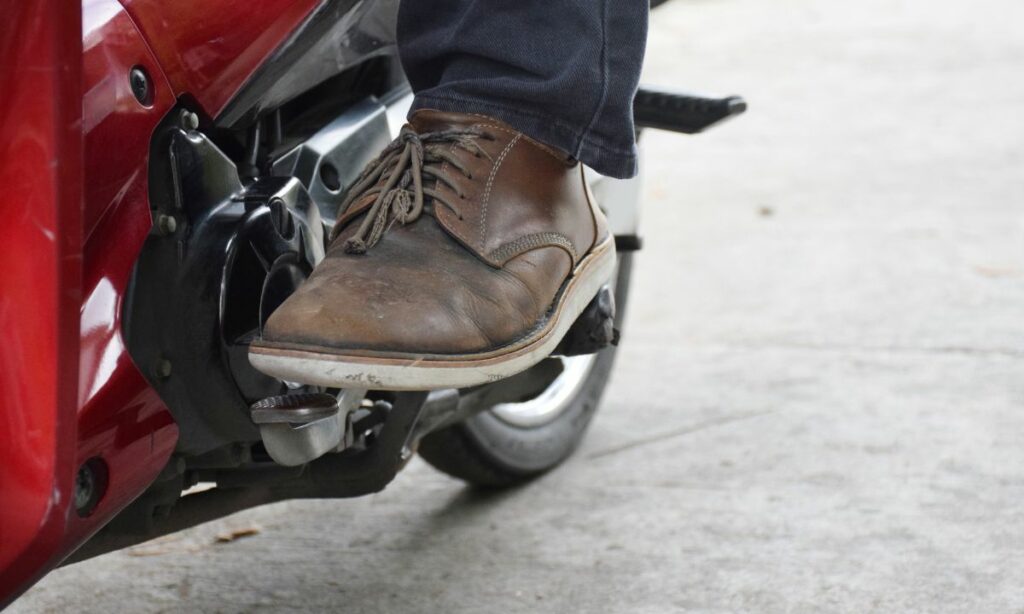
See, it works like a charm.
Another hack is to shift into the neutral position just before your motorcycle is coming to a halt.
As soon as you are stopping your bike, shift the gear into neutral right before.
Wrapping Up
To summarize, here are the key points to know if your motorcycle is not shifting into the neutral position.
- The most likely reason is your clutch cable not having enough slack. A loosened or a strongly tightened clutch cable will result in problems while changing the gears.
- Adjust the clutch by giving it the proper slack required. Usually, the slack should be around 2 mm to 3 mm. Check your company specifications. If not, go for trial and error approach.
- Another reason might be low oil levels. If it has been more than 3 months since you serviced your bike last time, gear problems or not, you gotta change the oil levels.
- Other possible reasons include warped clutch plates. If you have recently ridden your motorcycle for a long trip, your clutch plates may have warped due to overheating. If the other reasons mentioned above are not the causes, it is probably best for you to check the clutch plates.
- Lastly, if you are facing this difficulty only when the motorcycle is at stop, then there might not be a cause for concern. It is a common issue that most bike riders face. Roll your motorcycle slightly forward and then shift the gear to the neutral position. Another hack is to change the gear position to neutral right before the motorcycle comes to a halt.
Before you go…
Here are a few more gear-shifting posts of high relevance:
